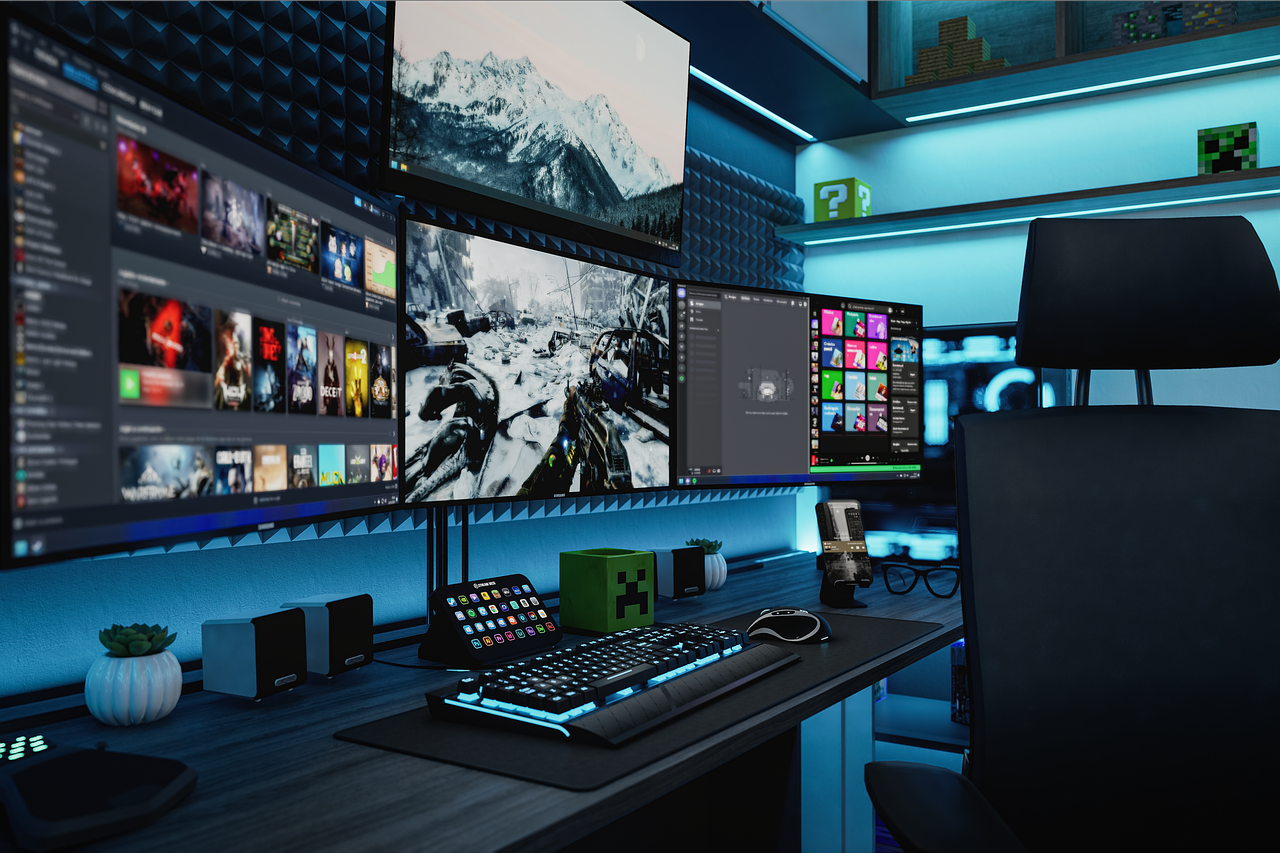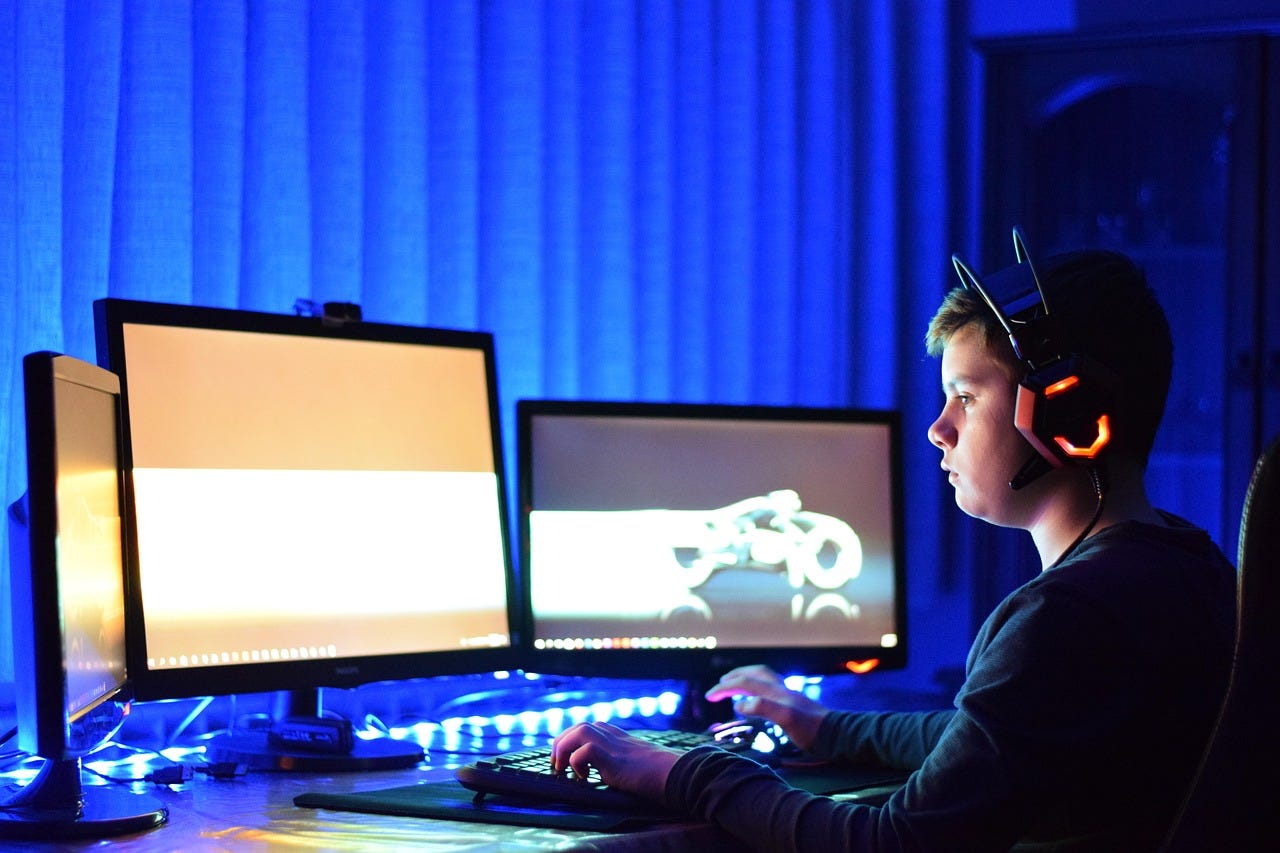When it comes to gaming, performance is everything. Whether you’re exploring massive open worlds, diving into competitive multiplayer matches, or streaming your gameplay online, having the right PC setup can mean the difference between a seamless experience and constant lag. But with so many options, components, and features to consider, where do you even begin?
In this guide, we’ll break down what goes into a top-tier gaming PC build that ensures smooth, lag-free gameplay — without overwhelming you with jargon. Whether you’re a beginner or an enthusiast, this blog will help you understand what makes a gaming PC truly powerful.

What Makes a Gaming PC “Smooth”?
When we talk about “smooth gameplay,” we’re referring to:
- High and stable FPS (Frames Per Second) — ideally 60 FPS or higher
- Fast load times — for games, levels, and textures
- No stuttering or freezing during intense gameplay
- Minimal input lag — for faster response in competitive games
Achieving these requires balance — not just having a powerful graphics card, but also ensuring your CPU, RAM, storage, and even cooling are up to the task.
Essential Components for a Smooth Gaming Experience
1. Graphics Card (GPU)
The GPU is the heart of your gaming PC. It processes the visual data and renders the stunning graphics in real time. For most modern AAA games, a mid to high-end dedicated GPU is a must.
Tip: Always match your GPU to the kind of games and resolution you play at. If you’re into competitive shooters like Valorant or CS2, high FPS matters. If you love cinematic adventures like Cyberpunk 2077, graphical fidelity is key.
2. Processor (CPU)
The CPU works hand-in-hand with the GPU. It handles background tasks, physics calculations, and AI. A powerful processor ensures you won’t bottleneck performance, especially in CPU-heavy titles like strategy or simulation games.
3. RAM (Memory)
RAM stores temporary data the game and system need to run quickly. Insufficient memory can cause your system to stutter or slow down while multitasking or gaming.
Ideal Setup: Go for a dual-channel setup for better speed and responsiveness.
4. Storage (SSD over HDD)
Games are getting bigger and more detailed. Using an SSD (Solid-State Drive) instead of a traditional HDD can drastically reduce load times, help with smoother asset loading, and improve your overall system responsiveness.
5. Motherboard
While the motherboard doesn’t directly affect FPS, it supports all your components and features. A good motherboard ensures compatibility, stability, and upgrade potential.
6. Power Supply (PSU)
Never cheap out on a PSU. An unstable power supply can lead to crashes or even hardware damage. Choose one with enough wattage and proper efficiency ratings.
7. Cooling System
High-performance parts generate heat. A solid cooling system — whether air or liquid — helps keep temps low and performance consistent during long gaming sessions.
8. Monitor
You can have the most powerful PC, but without a quality monitor, you won’t fully enjoy the benefits. Look for:
- High refresh rate (144Hz or more for fast-paced games)
- Low response time
- Accurate colors and resolution (especially for story-driven games)

Balanced Gaming PC Build Categories
Here’s how gaming PC builds are typically categorized (not price-based, just feature-focused):
🔹 Entry-Level Builds
- Designed for casual gaming or esports titles like Dota 2, CS2, or Fortnite
- Lower power consumption
- Great for 1080p gaming at medium settings
🔹 Mid-Range Builds
- Smooth gameplay at 1080p–1440p
- Can handle AAA games at high settings
- Good balance of performance and efficiency
🔹 High-End Builds
- Designed for 2K and 4K gaming, streaming, and VR
- Run games at ultra settings with ray tracing
- Future-proof and powerful for years
Pre-Built vs Custom-Built for Smooth Gameplay?
While pre-built systems offer convenience, a custom-built PC often delivers better value and performance tuning. More on that in our next blog post — but just know that when you build your own PC, you get exactly what you need for the games you love.
Optimization Matters Too
Even the best hardware can underperform if your system isn’t optimized. Here are a few quick tips:
- Keep your GPU drivers updated
- Monitor temperatures and clean dust regularly
- Turn off unnecessary background apps
- Use game optimization tools provided by GPU manufacturers (like NVIDIA GeForce Experience)
Final Thoughts
A smooth, lag-free gaming experience isn’t just about maxing out settings. It’s about building a balanced system, tailored to your gaming style, with components that work in harmony.
Whether you’re aiming for buttery-smooth competitive gameplay or immersive cinematic adventures, your PC can take you there — as long as it’s built right.